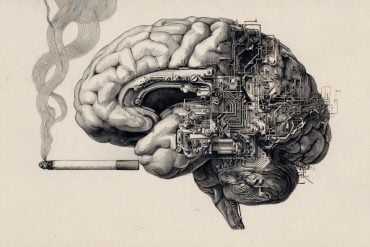Summary: A new review shows that children learn arithmetic most effectively through a structured approach that integrates conceptual understanding with brief timed practice and reflection. Rather than choosing between rote memorization or rich discussion, the most successful instruction cycles through both, reinforcing number sense and mental strategies.
Researchers argue that fluency should include both automatic recall and the ability to flexibly apply number relationships. These insights from cognitive science can guide early math instruction and improve long-term outcomes in education and beyond.
Key Facts:
- Fluency Redefined: Arithmetic fluency includes both fast recall and flexible reasoning with numbers.
- Integrated Approach: The best instruction blends timed practice with reflection and conceptual understanding.
- Future Impact: Strong early math fluency predicts success in algebra, word problems, and even future income.
Source: APS
What’s the best way for children to learn arithmetic—memorizing number values and multiplication tables or studying math at a deeper, conceptual level?
Educators have long debated the merits of these two approaches, but a new report in Psychological Science in the Public Interest shows that children learn most effectively when instruction follows an evidence‑based cycle: grounding facts in conceptual understanding, using brief timed practice to make those facts automatic, and then returning to discussion and reflection to deepen that knowledge.

The report, “What the Science of Learning Teaches Us About Arithmetic Fluency,” covers insights from developmental cognitive science to show how best to foster children’s arithmetic fluency—generally defined as a child’s ability to quickly and accurately solve math problems.
The researchers propose an expanded definition of arithmetic fluency to include not only the automatic recall of facts, such as 6 × 8 = 48, but also noticing and using number relationships to solve problems.
The authors of the paper include Nicole McNeil (University of Notre Dame), Nancy Jordan (University of Delaware), Alexandria Viegut (University of Wisconsin–Eau Claire), and Daniel Ansari (Western University).
The researchers—all experts on children’s math learning—describe findings on how arithmetic fluency develops, why it matters, and how educators can help students achieve it.
“We want to be clear: Educators don’t have to choose between timed practice and rich classroom discussions,” said lead author Nicole McNeil.
“A carefully structured approach—pairing brief, timed sessions that strengthen facts in memory with purposeful reasoning and discussion activities that weave those facts into an integrated knowledge network—gives students the fluency they need to succeed.”
The paper incorporates findings from behavioral experiments, longitudinal studies, neuroimaging, and design-based research to highlight the building blocks and consequences of fluency, which begins with number sense and numerical reasoning in preschool years.
Much like phonics support reading, early math experiences help children understand the meaning of numbers, relations, and operations.
Parents and educators can use opportunities to help children count and label the total number of objects in everyday sets, such as blocks or cereal bits, the authors suggest.
To explain how fluency develops, the authors turn to foundational theories in cognitive development that frame arithmetic learning not as a linear path, but as intertwined shifts between implicit and explicit knowledge.
Children first begin with intuitive insights; they combine numbers without being able to communicate their reasoning (implicit knowledge).
Gradually, they make that knowledge explicit, articulating patterns and strategies (e.g., “start with the bigger number,” “order doesn’t matter in addition”) and justifying why they work.
Deliberate, well-structured practice then re-proceduralizes this explicit knowledge, allowing students to retrieve facts and strategies automatically, with little mental effort.
Instruction should nurture shifts in both directions between implicit and explicit knowledge, the authors say, drawing out the reasoning behind early intuitions and providing enough targeted practice for those ideas to become fast and effortless for higher‑level problem solving.
Early arithmetic instruction, they assert, should include the following:
- Early progress monitoring to identify gaps in a child’s mental grasp of numbers.
- Explicit instruction on thinking strategies, such as using 10 as a reference point for easy mental calculations.
- Well-structured retrieval practice in which children recall arithmetic combinations and their sums or products.
- Time-limited practice that nudges students toward fast retrieval strategies over slower counting methods. However, this should be used only after children demonstrate high accuracy with the facts being practiced.
- Discussion, reflection, and justification, giving students the opportunity to articulate their thinking in math activities and helping them understand the underlying principles of arithmetic.
The authors also discuss the important role math fluency plays in children’s futures. Studies show that students with strong fluency are better equipped to learn algebra, solve word problems, and reason with fractions. Research also links fluency with later-life outcomes like educational attainment and income.
The researchers call for evidence-based instructional practices that reflect what we know about how children learn.
They advocate more developmental cognitive science in teacher preparation programs, particularly in early childhood education, so that teachers can evaluate instructional strategies through the lens of learning science.
In an accompanying commentary, developmental psychologist Melissa E. Libertus (University of Pittsburgh) said the review raises a few factors for future research, such as the use of digital tools to facilitate personal arithmetic learning and the role of parents’ math anxiety in their children’s math skills.
Nevertheless, McNeil and her coauthors provide a convincing argument, Libertus said, because fluency instruction plays an important role in helping students develop math skills to succeed in tomorrow’s workforce.
About this learning, math, and neurodevelopment research news
Author: Hannah Brown
Source: APS
Contact: Hannah Brown – APS
Image: The image is credited to Neuroscience News
Original Research: Open access.
“The Importance of Early Mathematical Foundations, Sensemaking, and the Home Environment for Children’s Development of Arithmetic Fluency: Commentary on McNeil et al” by Libertus, M. E et al. Psychological Science in the Public Interest
Open access.
“What the Science of Learning Teaches Us About Arithmetic Fluency” by McNeil, N et al. Psychological Science in the Public Interest
Abstract
The Importance of Early Mathematical Foundations, Sensemaking, and the Home Environment for Children’s Development of Arithmetic Fluency: Commentary on McNeil et al
McNeil et al. (2025) provided a comprehensive review of the literature on arithmetic fluency and made a compelling case for the importance of developing arithmetic fluency through mathematics education.
They emphasized that the development of arithmetic fluency is key in gaining and increasing conceptual understanding of mathematical principles beyond merely memorizing arithmetic facts.
The idea that memorization frees cognitive resources during mathematical problem-solving is straightforward, but freeing cognitive resources could also be achieved by other means (e.g., a calculator).
However, an underappreciated notion is that developing arithmetic fluency allows children to discover patterns and principles in relations between numbers that go beyond the simple facts. McNeil et al. persuasively argued that arithmetic fluency can thus form the foundation for strategy development and conceptual understanding of relations between numbers (e.g., 9 = 4 + 5 = 4 + 4 + 1 or 9 = 5 + 4 = 5 + 5 – 1).
Highlighting this bidirectional interplay between implicit and explicit knowledge provides an important framework for understanding why ensuring arithmetic fluency is critical.
Abstract
What the Science of Learning Teaches Us About Arithmetic Fluency
High-quality mathematics education not only improves life outcomes for individuals but also drives innovation and progress across society. But what exactly constitutes high-quality mathematics education?
In this article, we contribute to this discussion by focusing on arithmetic fluency. The debate over how best to teach arithmetic has been long and fierce.
Should we emphasize memorization techniques such as flashcards and timed drills or promote “thinking strategies” via play and authentic problem solving? Too often, recommendations for a “balanced” approach lack the depth and specificity needed to effectively guide educators or inform public understanding.
Here, we draw on developmental cognitive science, particularly Sfard’s process–object duality and Karmiloff-Smith’s implicit–explicit knowledge continuum, to present memorization and thinking strategies not as opposing methods but as complementary forces. This framework enables us to offer specific recommendations for fostering arithmetic fluency based on the science of learning.
We define arithmetic fluency, provide evidence on its importance, describe the cognitive structures and processes supporting it, and share evidence-based guidance for promoting it.
Our recommendations include progress monitoring for early numeracy, providing explicit instruction to teach important strategies and concepts, implementing well-structured retrieval practice, introducing time-limited practice only after students demonstrate accuracy, and allocating sufficient time for discussion and cognitive reflection.
By blending theory, evidence, and practical advice, we equip educators and policymakers with the knowledge needed to ensure all children have access to the opportunities needed to achieve arithmetic fluency.







